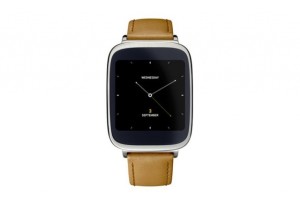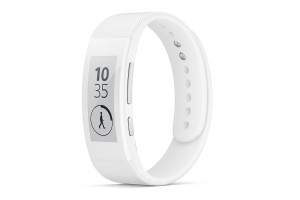SINGLE POST
Designing For Smartwatches And Wearables To Enhance Real-Life Experience
Imagine two futures of mobile technology: in one, we are distracted away from our real-world experiences, increasingly focused on technology and missing out on what is going on around us; in the other, technology enhances our life experiences by providing a needed boost at just the right time.
The first reality is with us already. When was the last time you enjoyed a meal with friends without it being interrupted by people paying attention to their smartphones instead of you? How many times have you had to watch out for pedestrians who are walking with their faces buried in a device, oblivious to their surroundings?
The second reality could be our future – it just requires a different design approach. We have to shift our design focus from technology to the world around us. As smartwatches and wearables become more popular, we need to create design experiences that allow us to create experiences that are still engaging, but less distracting.
Lessons Learned From A Real-Life Project
We create a future of excessive distraction by treating our devices as small PCs. Cramming too much onto a small screen, and demanding frequent attention on a device that is strapped to your body means you can’t get away from the constant buzzing and beeping right up against your skin. Long, immersive workflows that are easily handled on a larger device become unbearable on a device that has less screen area and physical navigation space.
I noticed this on my first smartwatch project. By designing an application based on our experience with mobile phones, we accidentally created something intrusive, irritating and distracting. That meant the inputs and workflows demanded a lot of attention and were so involved that people had to stop moving in order to view notifications or interact with the device. Our biggest mistake was using the vibration motor on all notifications. If you had a lot of notifications, your smartwatch would buzz constantly. You can’t get away from it and people would actually get angry at the app.
HOW THE REAL WORLD INSPIRED OUR BEST APPROACH
In a meeting, I noticed the lead developer glancing down at the smartwatch on his wrist from time to time. As he glanced down, he was still engaged in the conversation. I wasn’t distracted by his behavior. He had configured his smartwatch to only notify him if he got communications from his family, boss or other important people. Once in a while, he interacted with the device for a split second, and continued on with our conversation. Although he was distracted by the device, it didn’t demand his complete attention.
I was blown away at how different his experience was from my smartphone. If my phone buzzes in my pocket or my bag, it completely distracts me and I stop focusing on what is going on around me to attend to the device. I reach into my pocket, pull out the device, unlock the screen, then navigate to the message, decide if it’s important, and then put the device back. Now where were we? Even if I optimize my device settings to smooth some of this interaction out, it takes me much longer to perform the same task on my smartphone because of the different form factor.
This meeting transformed our approach to developing our app for the smartwatch. Instead of creating an immersive device experience that demanded the user’s attention, we decided to create something much more subtle. In fact, we moved away from focusing on application and web development experiences to focusing on application notifications.
DESIGNING WITH A DIFFERENT FOCUS IN MIND
 Instead of cramming everything we could think of on these smaller devices, we aimed for a lightweight extension of our digital virtual experience into the real world. You could get full control on a PC, but on the smartwatch, we provided notifications, reminders and short summaries. If it was important, and it could be done easily on a smartwatch, we also provided minimal control over that digital experience. If you needed to do more, you could access the system on a smartwatch, or a PC. We had a theory that we could replicate about 60% of PC functionality on a smartphone, and another 20% of that on a smartwatch.
Instead of cramming everything we could think of on these smaller devices, we aimed for a lightweight extension of our digital virtual experience into the real world. You could get full control on a PC, but on the smartwatch, we provided notifications, reminders and short summaries. If it was important, and it could be done easily on a smartwatch, we also provided minimal control over that digital experience. If you needed to do more, you could access the system on a smartwatch, or a PC. We had a theory that we could replicate about 60% of PC functionality on a smartphone, and another 20% of that on a smartwatch.
Each different kind of technology should provide a different window on our virtual data and services depending on their technical capabilities and what the user is doing. Byproviding just the right information, at just the right time, we can get back to focusing on the real world more quickly. We stopped trying to display, direct and control what our end users could do with an app, and relied on their brains and imaginations more. In fact, when we gave them more control, with information in context to help solve the problem they had right then and there, users seemed to appreciate that.
Design To Enhance Real-Life Experiences
After the initial excitement of buying a device wears off, you usually discover that apps really don’t solve the problems you have as you are on the move. When you talk to others about the device, you find it difficult to explain why you even own and use it other than as a geeky novelty.
Now, imagine an app that reminds you of your meeting location because it can tell you are on the wrong floor. Or one that tells you the daily specials when you walk into a coffee shop and also helps you pay. Imagine an app that alerts you to a safety brief as you head towards a work site, or another app that alerts you when you are getting lost in an unfamiliar city. These ideas may seem a bit far off, but they are the sorts of things smartwatches and similar small screen devices could really help with. As Josh Clark says, these kinds of experiences have the potential to amplify our humanity.
How is this different from a smartphone? A smartphone demands your complete attention, which interrupts your real-world activities. If your smartwatch alerts you to a new text or email, you can casually glance at your wrist, process the information, and continue on with what you were doing. This is more subtle and familiar behavior borrowed from traditional wristwatches, so it is socially acceptable. In a meeting, constantly checking your smartphone is much more visible, disruptive, irritating and perceived as disrespectful. If you glance at your wrist once in a while, that is fine.
It’s important to remember that all of these devices interrupt our lives in some way. I analyze any interruption in our app designs to see if it has a positive effect, a potentially negative effect, or a neutral effect on what the user is doing at the time. You can actually do amazing things with a positive interruption. But you have to be ruthless about what features you implement. The Pebble smartwatch design guide talks about “tiny moments of awesome” that you experience as you are out in the real world. What will your device provide?

Tesla
Revoke II theme
Tesla
The Best!!!
Tesla
Nice Theme